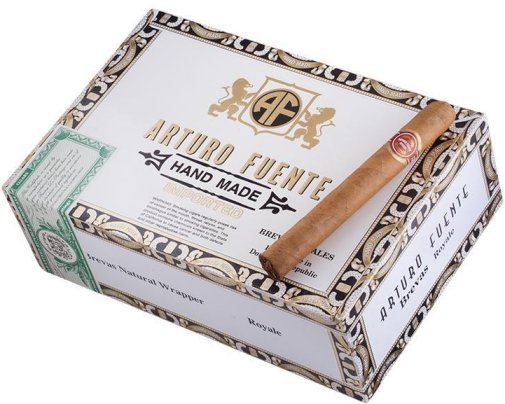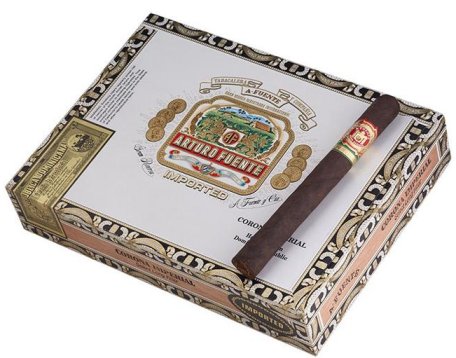What about the cigar composition? How are cigars constructed or made of? What goes into a cigar? The answers to these questions are key to assessing the quality of an individual cigar.
All but the thinnest cigars include three elements. The filler, tobacco at the center, a binder leaf (which holds the filler together) and an outer wrapper around the entire cigar. Handmade cigars (as opposed to machine-made cigars) use ‘long filler’ tobacco. These are leaves which run the length of a cigar. In a handmade cigar, the filler, binder and wrapper are combined manually by a person to create the cigar. The ‘cap’ is the last item constructed onto the cigar by the cigar roller.
Let’s take a look at the three different tobacco sections that comprise a premium handmade cigar.
WRAPPER
The wrapper is like the expensive wrapping paper with which you would wrap an important gift It is what gives the cigar it’s outer look. The wrapper is what you see when you look at a fine cigar. It is made up of half a tobacco leaf and is rolled around the body of the cigar. The wrapper of a cigar is carefully selected not only for its taste, but for its beauty and burn. The quality of a cigar is often judged by its tobacco wrapper.
The cigar wrapper must be flawless, The best quality tobacco is used. Cigar wrappers are stretched around the cigar to insure leak-free seams, or else the cigar will not burn properly, and have no draw. The wrapper should not be dry; it should not flake or crumble when touched. Generally speaking, the lighter the wrapper color, the milder the taste (i.e., Connecticut Shade). The darker the wrapper, the more full-bodied the cigar will be (i.e., maduro wrappers) but this is not always the case. Cigars are usually described as ‘mild, medium or full-bodied’ (just like referring to wines). Cigar novices will prefer a milder cigar while an experienced cigar smoker may prefer a darker wrapper for a fuller bodied taste.
Vegetable gum is used to seal the wrapper at the head and a small bit of tobacco leaf is attached to finish off the cigar. This piece is called the cap of the cigar.
There are 10s of different wrapper shades identified and used by the different manufacturers. The most common are:
Connecticut Shade is the most expensive tobacco in the world! This wrapper gets its name from where, and how it is grown. The tobacco fields of Connecticut USA. These fields are covered by tents made of translucent material. They filter and diffuse the sunlight before it reaches the tobacco plants. This makes the leaves smooth, with a thin and fine texture and a delicate red-brown color. Under the cover of the tent, heat and humidity are trapped, creating a tropical growing environment. The tent also protects the plants from wind, rain and hail. Connecticut Shade tobacco leaf is world famous for its smooth complexion, wonderful light brown shade and a delicate, smooth, yet complex flavor.

Like any cigar tobacco, The seeds of a strain do not always get grown in the country of its origin. One fine example of this is the Ecuadorian Connecticut wrapper. It is the same plant as grown in the US, only it is grown in misty valleys of Ecuador, removing the need for tents. These leaves tend to be smoother, oilier and slightly darker than its US counterpart. Connecticut cigar wrappers can also be denoted by the abbreviation CT.
Maduro cigar wrappers are easy to identify because they are dark brown to black in color. The term ‘Maduro’ comes from the Spanish word for ‘ripe’. The leaves are said to be ripe because they come from the top of the tobacco plant and are the last to be picked; therefore, they are darker, thicker and richer than their brothers from the lower part of the plant.
The dark brown color comes about due to the way it is prepared after harvesting. The tobacco leaves are arranged in large square piles called ‘bulks’. The pressure from the weight of the bulks and bacterial action create heat and fermentation; the tobacco is said to ‘sweat’. As the tobacco sweats, it becomes progressively darker and sweeter to the taste; impurities are driven out. Once a pre-determined temperature is reached, the bulk is broken down, re-stacked, and the process is repeated again and again until the desired color and taste are achieved. Maduro leaves are aged this way and dried for 5 years or more.

Maduro wrappers are considered to be stronger, but this is not always true. A darker wrapper doesn’t necessary translate to cigar strength. A maduro wrapper is darker simply because it has been allowed to darken through the aging process.
Cameroon wrappers come from West Africa. These wrappers are darker in color than a Connecticut Shade, than but not quite as dark as a maduro. Cigars made with Cameroon wrappers offer a taste in the middle of a mild-bodied Connecticut Shade and the fullest-bodied maduro cigars. The traditional farming methods and the rich soil of Western Africa give this wrapper a distinctive rich taste and dark brown color when properly aged.
BINDER
If you were to remove the wrapper layer from a cigar, the next layer you would see is called the binder. The binder does just what the name implies – it binds the cigar together. Binder tobacco is not seen by the cigar smoker. Because it is not seen, the tobacco used is not selected for its flawless beauty, but rather for its function. Binder tobacco is picked for its strength, flavor and burning characteristics. Good binder tobacco acts as a fuse; it insures a long, slow, even burn while the cigar is being smoked.
FILLER
Filler tobaccos are the innermost leaves of the cigar. The leaves that make up the filler tobaccos make up the majority of the volume of the cigar, This is the tobacco that has the most effect on the strength of the cigar. All of the leaves must go through a curing, fermentation, and aging process, with the higher quality cigar brand leaves being fermented for up to two years even before aging and drying. Long filler cigars are generally of higher quality than short filler, as short filler tends to be leftover scraps that the roller uses in a cigar.
All quality, premium cigars use ‘long filler’ leaf. This means that the filler leaves are whole and intact. Long filler cigars are generally of higher quality than short filler, as short filler tends to be leftover scraps that the roller uses in a cigar. Usually inexpensive machine-rolled cigars use ‘chopped’ or short filler tobacco. Every brand has a variant as not to waste what is left from the premium hand rolled cigars. The tobacco is just as good, just not as exquisite.
The use of long filler leaves is evidenced by the long cylindrical ash that grows on a premium cigar. The ash of an inexpensive cigar, using chopped or short filler flakes, drops off like a cigarette ash.
Puro Cigars
As mentioned above, the tobacco plants and seeds can come from and/or are grown in many different countries around the world. For example a Dominican CT (Connecticut) is a US tobacco seed variety, that is grown in the lush valleys of the Dominican Republic. A cigar is comprised of three ‘layers’ or sections of tobacco. Each section we talked about can in fact come from 3 different sources, and therefore, possibly 3 different countries. The country of origin of a cigar is only really based on the country of where it is made, and generally (but not always) based on the filler tobacco.
A puro cigar is harder to come by. Puro is the Spanish word for ‘pure’. It is a cigar that is comprised of tobacco from a single country of origin for the entire cigar construction.. This therefore, truly represents the full offering that the country itself can produce. These types of cigars are revered by some smokers.
If you are not sure what you are looking for in a cigar always feel free to talk with a cigar shop owner.
We want to be your go to online cigar smoke shop. If you have recommendations for articles or want to submit photos or stories, contact us at Cigar Smoke Shop.